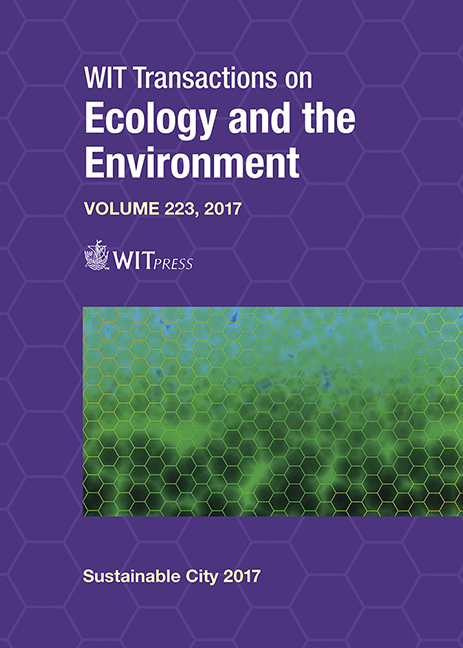ACCELERATING URBAN TRANSITION: AN APPROACH TO GREENING THE BUILT ENVIRONMENT
Price
Free (open access)
Transaction
Volume
223
Pages
12
Page Range
3 - 14
Published
2017
Size
1,453 kb
Paper DOI
10.2495/SC170011
Copyright
WIT Press
Author(s)
ANDREA BOERI, JACOPO GASPARI, VALENTINA GIANFRATE, DANILA LONGO
Abstract
The Bologna Adaptation Plan, recently adopted by the City authorities to address the way the city of tomorrow will coop with climate change effects, suggests some effective measures to mitigate and reduce the impacts of urban heat island [UHI] and heat waves. Among the suggested actions, the greening of in-between spaces of the dense built environment and the introduction of new green surfaces (roof and facades) seem to offer interesting perspectives. The paper describes a research activity run by the Department of Architecture and the Municipality of Bologna to investigate how to define the best arrangement of greening with the aim to optimize the impact on outdoor comfort conditions. After analysing UHI, the related parameters and the mitigation effect produced by green surfaces, some demo sites were assumed as test bed to simulate different green layout. Models and simulations were performed using ENVIMET, a software recognized in the scientific literature as one of the most used tool at urban scale. Once boundary conditions were modelled and all the main features of the sites were properly modelled, simulations were run in order to compare different scenarios coming from a number of architectural, economical and practical constraints. The results are then compared with other factors, related to the social aspects, the use of the spaces, the perception of the sites, etc. Two demo sites were investigated in two of the densest parts of the city of Bologna and one in the historic city center was definitely implemented as a temporary initiative coupling the environmental challenge with the opportunity to socially reshape a fragment of old city. This micro-intervention represents the first experimental phase to strengthen the urban transition of the historic city center in the perspective to realize no-disruptive transformations of the open public spaces, improving the users’ wellbeing and comfort.
Keywords
urban transition, regeneration, greening actions, sustainable design, thermal comfort





